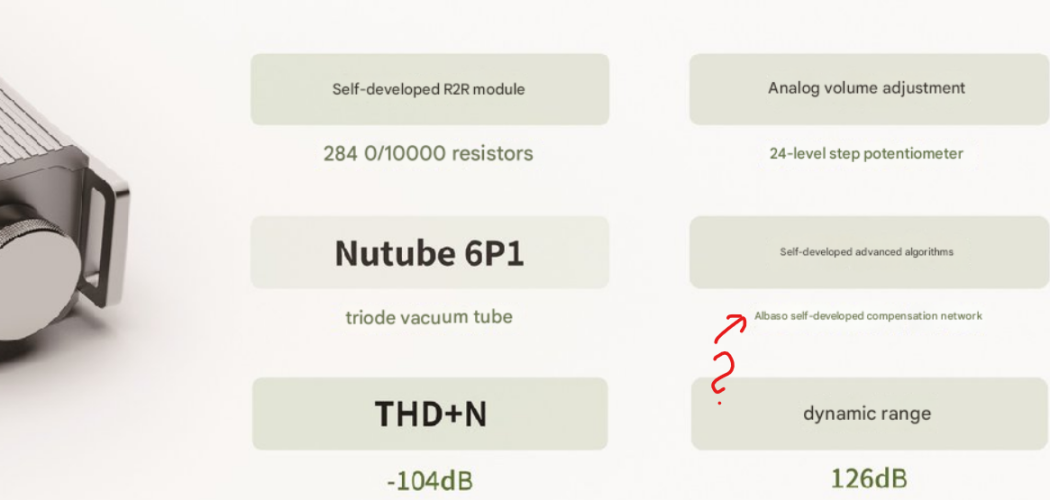I'm of the school to always go for the analog volume control option if there's one, over a digital control, but that's now been tempered by the realism of:
- How loud do I really listen?
- The quality of digital volume controls today, how ubiquitous they are in everything and the cost of adding a supplementary analog controls
Regarding (1), I typically achieve 75dB max for two-channel, and I can assume it's lower for IEMs and headphones. Given these two tables below, I certainly still have signal-to-noise headroom if I need to attenuate to 75dB, with travel on a digital control to spare.

 Source: ESS Technology / Resonessence Labs who also wrote a disclaimer justifying a digital volume control over an analog one. It's a claimed 132dB DAC so assume D16 will start losing resolution a bit higher up in attenuation in these charts
Source: ESS Technology / Resonessence Labs who also wrote a disclaimer justifying a digital volume control over an analog one. It's a claimed 132dB DAC so assume D16 will start losing resolution a bit higher up in attenuation in these charts
Now, the above charts are theoretical, they are specific to a $8,000 product and may not reflect everyone else's digital volume control, but it's a guide. If using a LO into PB5 you will have no choice but to use the digital volume control for trim in order to bring down the 3.3V output to the 2.5V one iBasso advise.
So it would be really good to see what
@audionewbi's friend uncovered with his measurements of the D16's volume control. My guess is, the innocuous drop in dynamic range resolution going to 2.5V will be overshadowed by the PB5's noise floor in the first place.
As for using the phone out on D16 I will still always use the stepped attenuator that iBasso designed because it's clearly no ordinary analog volume control like RME are describing. And it's a permanent fact that only an analog volume control can increase and decrease both signal and noise levels at the same time.
BUT, like the discussion of Coax vs USB neither is outrightly better than the other, just subjectively different, and so it's perfectly understandable
@Whitigir prefers the sound of digital attenuation over analog attenuation. In which case D16 is well equipped because it would seem its 'L' analog gain is very close to unity gain, 4V LO output and 4.2V 'L' PO output (load unspecified).
Which brings me to my hack on getting the best out of a volume control, be it digital or analog –
climb that knob as high as you can, attenuate as little as possible. Which means you need a device with as low a closed-loop gain as possible, ideally working at unity like D16.
What annoys me most today is with manufacturers who apply excessive, way too much, gain to their product, and those that build with op-amps are particularly guilty of this. Those parts have crazy open-loop gain that either manufacturers don't fully close down, or they apply so much feedback to the part to get the gain to 'practical IEM use levels' that that spawns other problems...
These are problems far less likely if a manufacturer builds discrete, and is something I will always respect them for, in combatting 2024's real enemy of dynamic range and signal-to-noise ratio: gain. I mean, it's 2024. We've made huge progress building great portable DACs and digital volume controls, but if we don't target the real problem those advancements would mean squat real-world.























